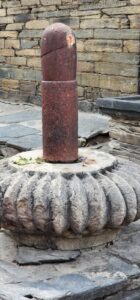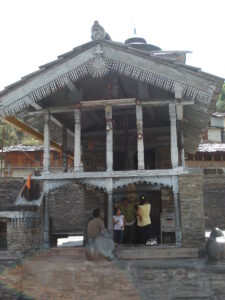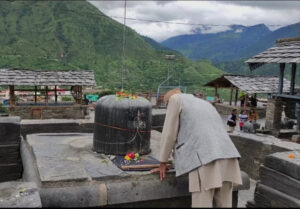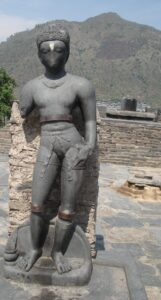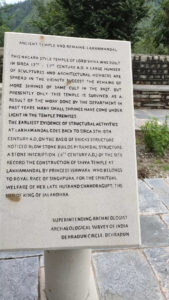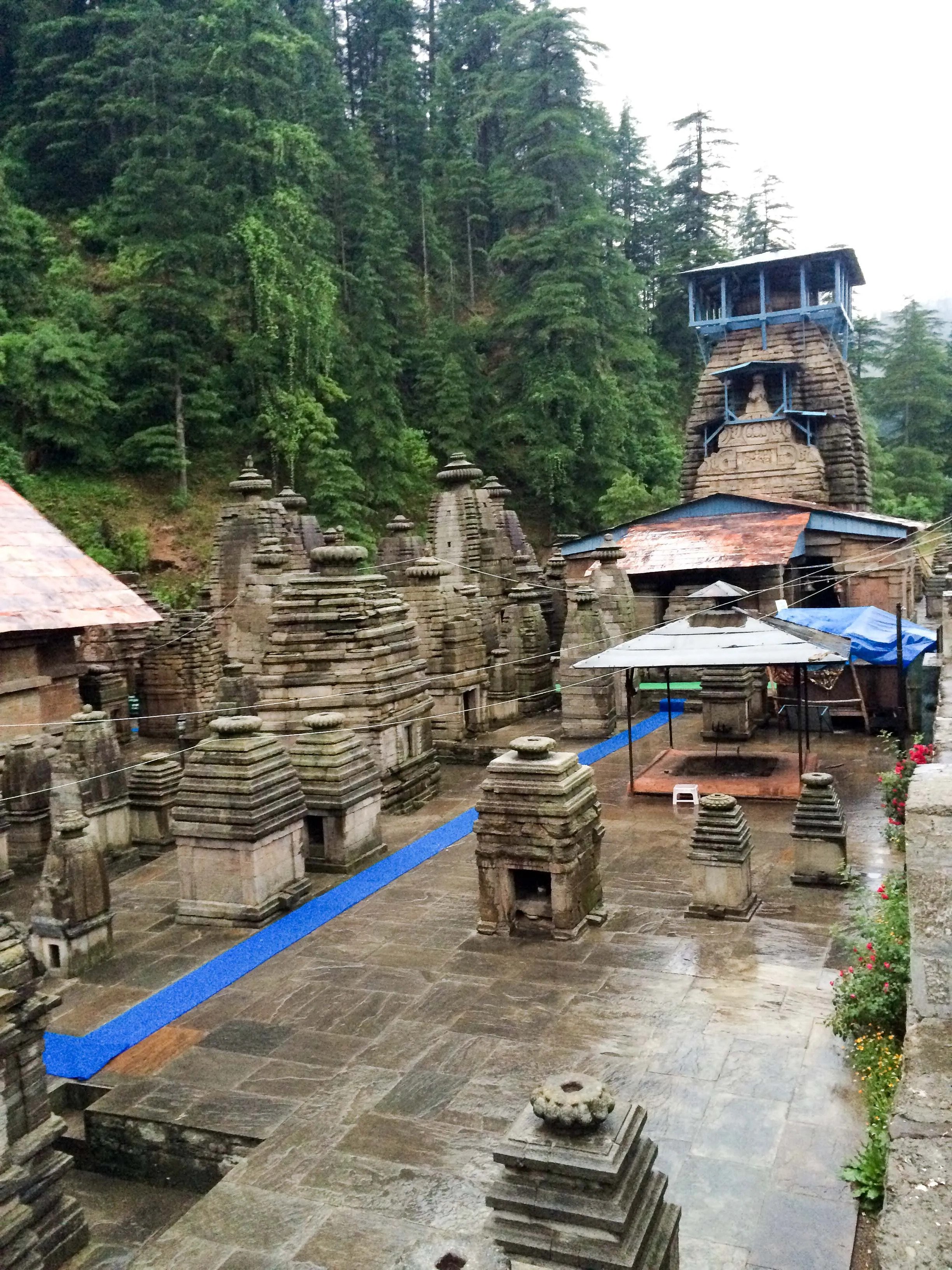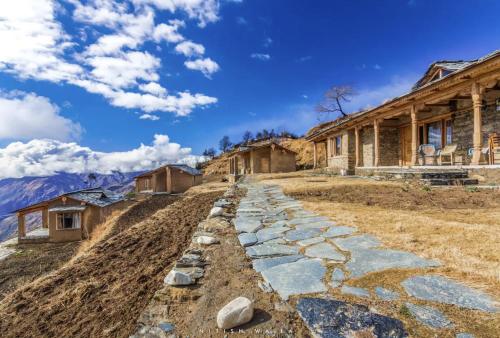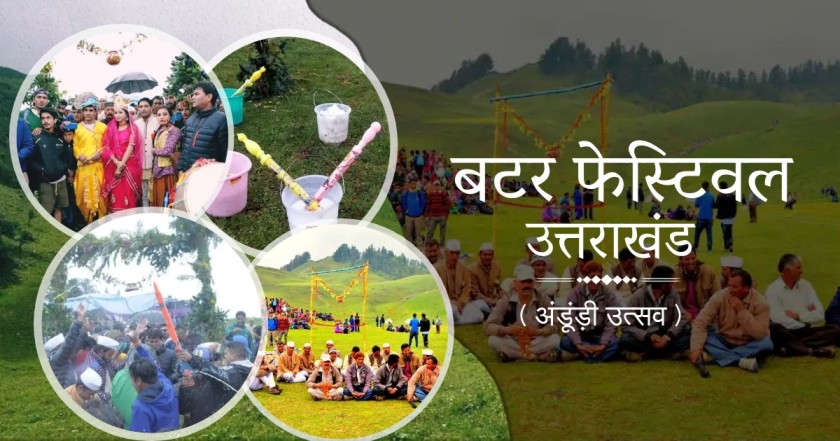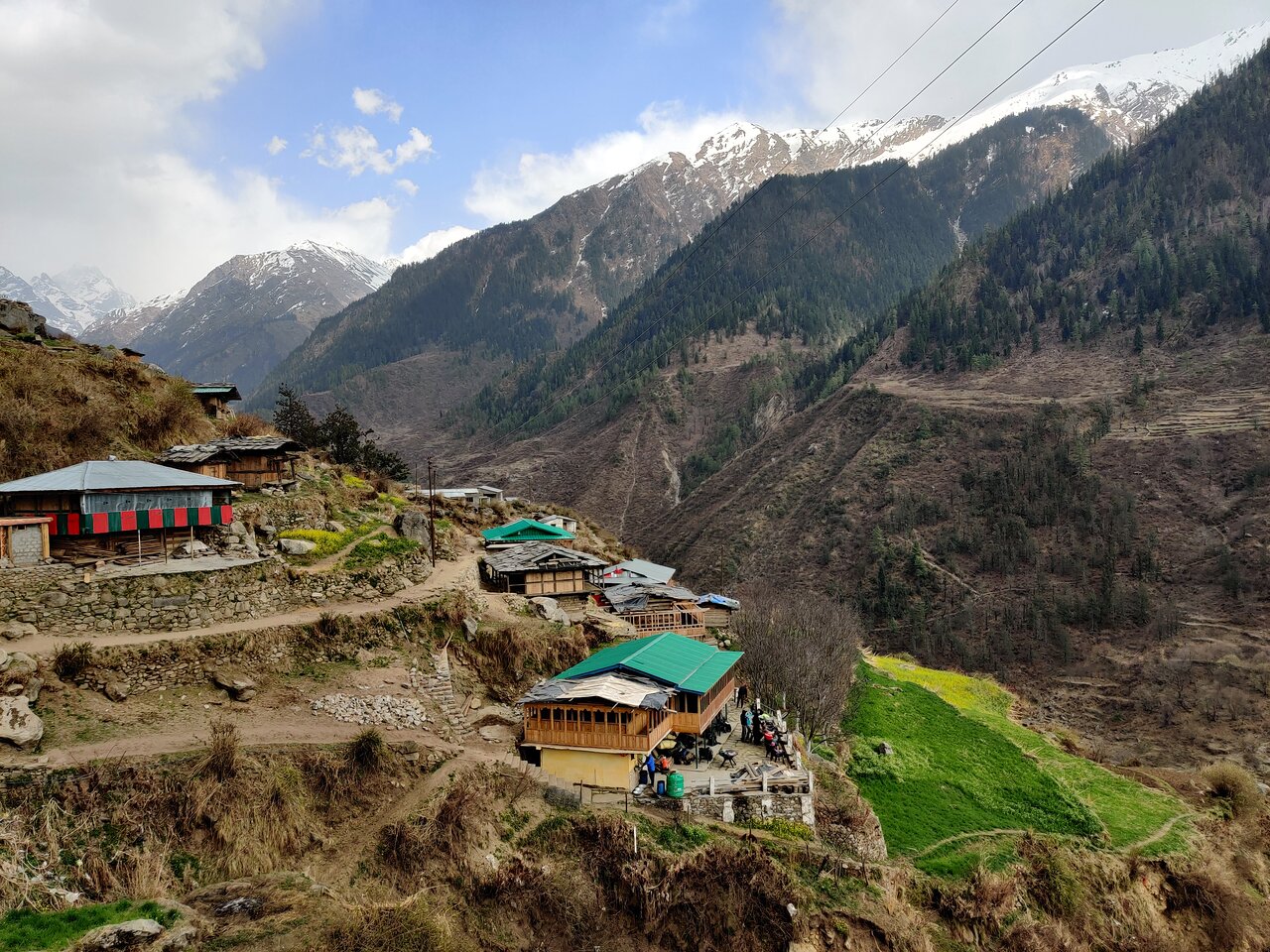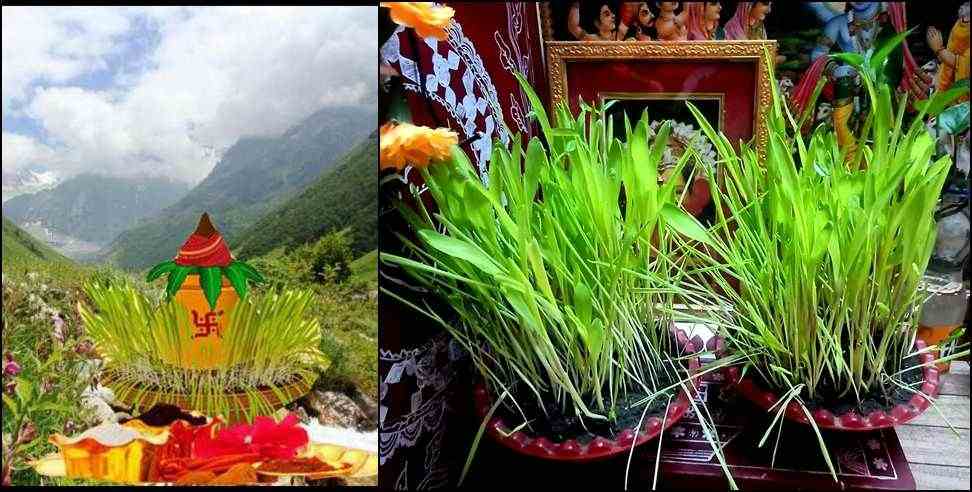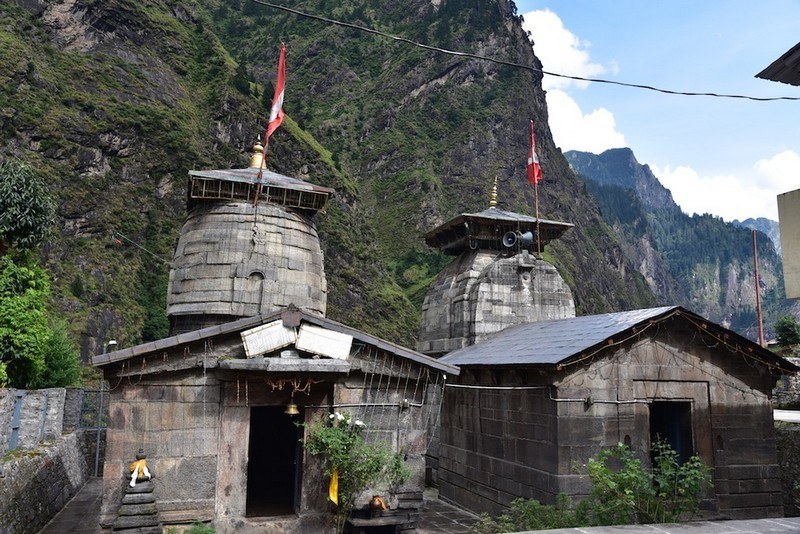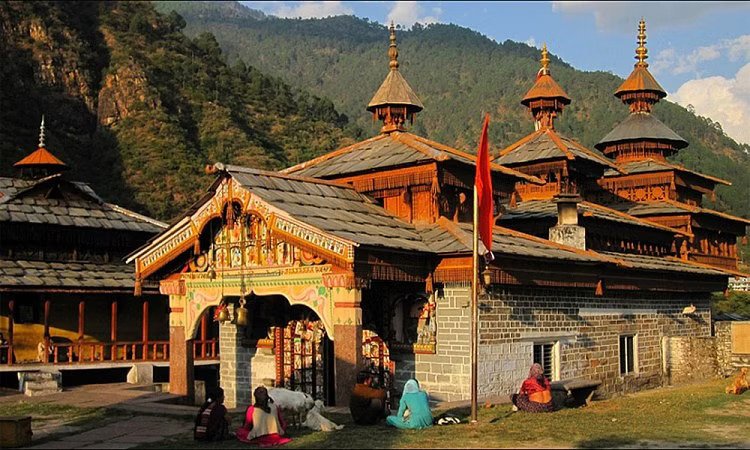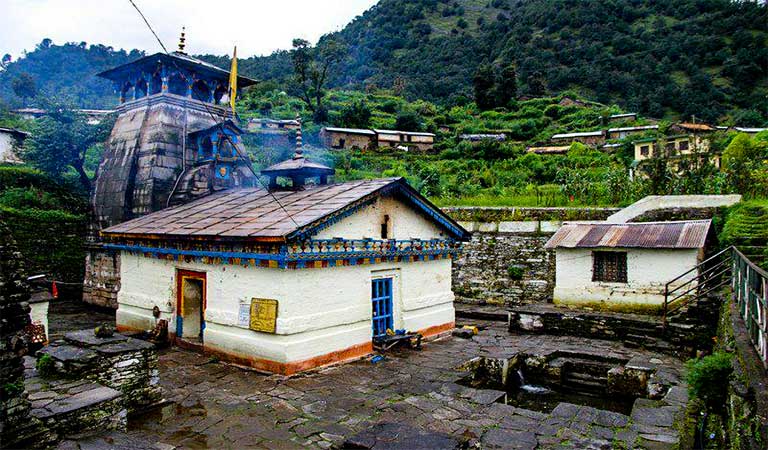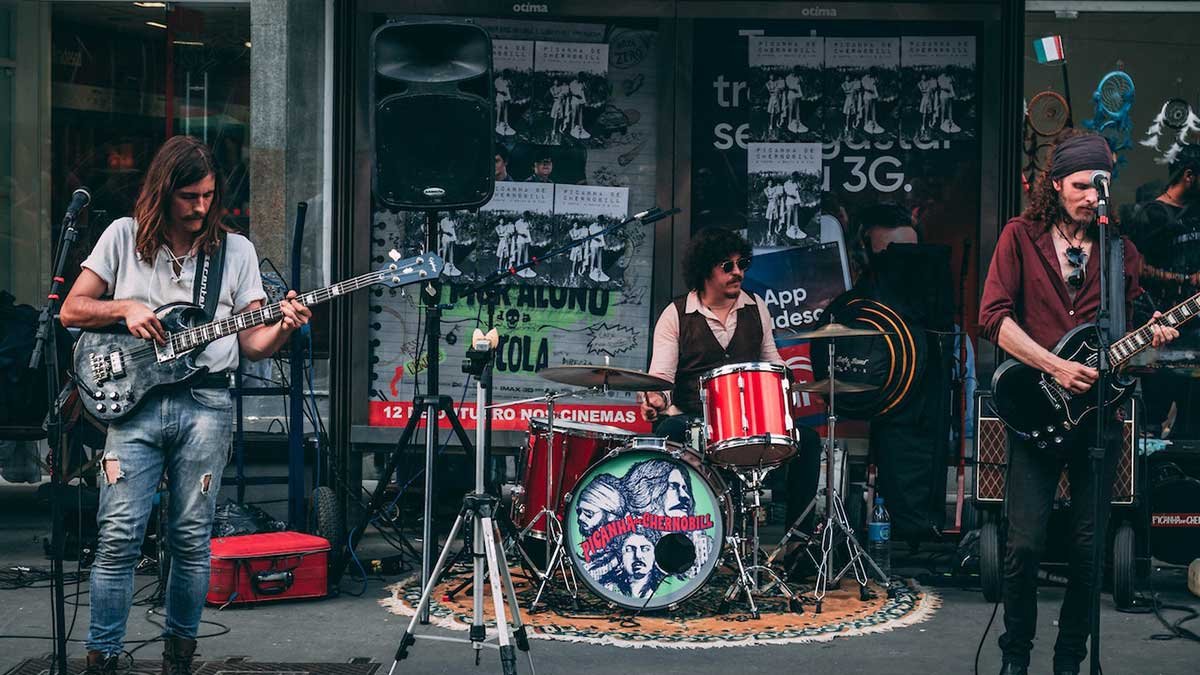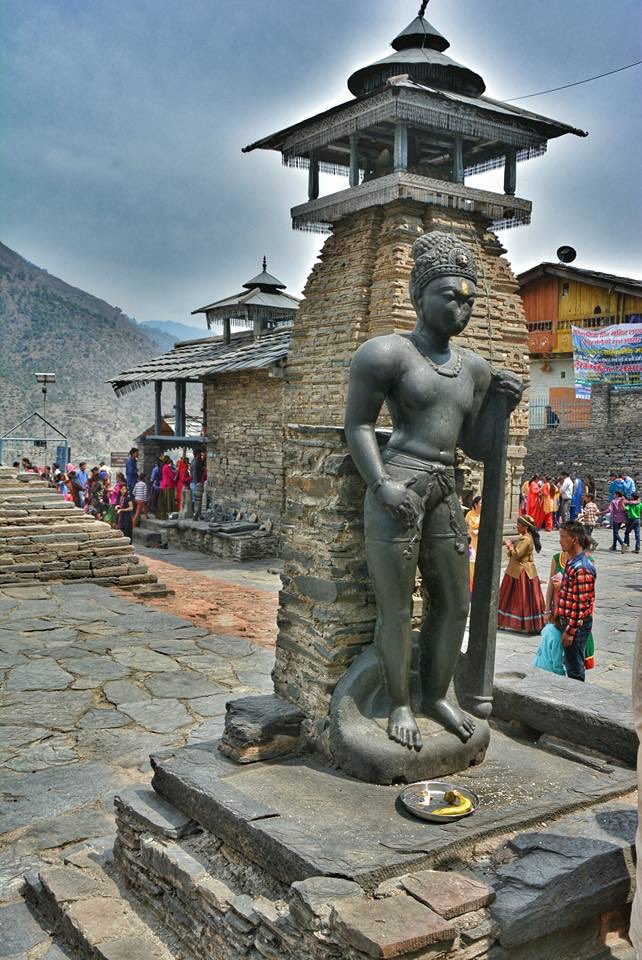
The Garhwal region is known for its lush green rolling hills, captivating colonial hill stations, and breathtaking views. Dhanaulti’s snow-topped mountains, Mussoorie’s Mall Road, and the stunning Doon Valley are all major attractions. But there is one small village that stands out for more than its natural beauty, Lakhamandal is full of ancient secrets, myths, and stories. It has a rich history that stretches back centuries.
The Lakhamandal temple is located in the Jaunsar-Bawar area of the Dehradun district at Chakarata in Uttarakhand.
About the temple and its history:
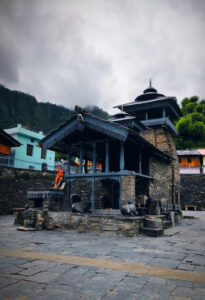
Lakhamandal temple is dedicated to Lord Shiva and Goddess Parvati and is highly revered by the Shakti Cult, who believe that a visit to the temple will bring an end to their misfortunes. The temple is adorned with beautiful artwork and is unique in that it is home to two different-coloured and shaped Shiv Lings, one representing the Dwapar Yug and the other representing the Treta Yug.
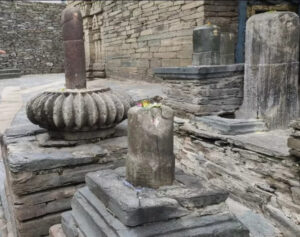
green colour ling (tertayug)
Inside the temple, one can find the footprints of baby Parvati on a rock, as well as idols of Lord Kartikeya, Lord Ganesh, Lord Vishnu and Lord Hanuman. Two Nandi statues are also placed at the entrance of the temple.
The temple has a huge verandah, with a large Shiva ling placed on a platform in the middle and four stone statute surrounding it (local says that this Shivling represents the Yudhishthir and the other four represent Arjun, Bhim, Nakul, and Sehdev), it was believed that Yudhishthir was planning to construct a shiva temple there but before it could complete dhuryoana plan to kill Pandavas was executed and this temple was not completed.
The LakhaMandal temple has a long history. It was built by Yudhishthir. The temple was constructed to commemorate the power of Lord Shiva and Goddess Parvati. Local people have a strong conviction that this temple and its environs were all Duryodhana’s plan to burn the Pandavas alive in a palace made of shellac, called the Lakshyagriha. This is the reason this place got its name ” LakhaMandal”. But thankfully Pandavas were saved by the power of Shakti. They were able to escape by a secret cave, which extended 2 km from the temple.
It is believed that the discovery of this temple can be traced back to a cow that used to pour milk on the Shiva Ling every day. One day, the cow’s owner decided to follow her and found the temple. This LakhaMandal temple is quite similar to the Kedarnath shrine.
The temple was built in the 8th Century and is adorned with many stone carvings with a mythical theme. There are also two statues standing 6 feet tall at the entrance, referred to as gatekeepers. Remains of the temple and Shiva Ling’s fragments can be scattered around the grounds. During our visit, we noticed a broken statue and Shiva Ling here. It is believed that these were destroyed by the British who sought to loot the temple, yet found nothing.
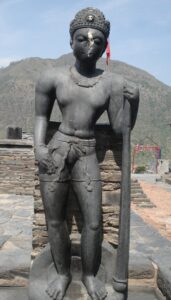

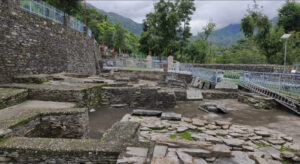
Additionally, there is a stone Shiva Ling located a short distance away, which glows when water is poured on it, one can see their reflection in the water.
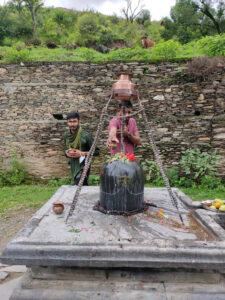
ASI (Archaeological Survey of India) has banned the construction of houses in Lakhamandal because people still found shivling when they dig deep in the earth, and in the area of 300m-400m, no one is allowed to construct or dig in the earth.
How to reach Lakhamandal:
By Air: The nearest airport is Jolly Grant Airport (144.7km) which is located at Dehradun.
By Rail: The nearest railway is Dehradun (118 km).
By Road: To reach Lakhamnadal you can hire a taxi/bus from Dehradun (118km) or Mussoorie (75km)
you can check the story about Lakhamnadal on our social media.
Follow us on Instagram 👈click here
Subscribe to Youtube 👈click here

